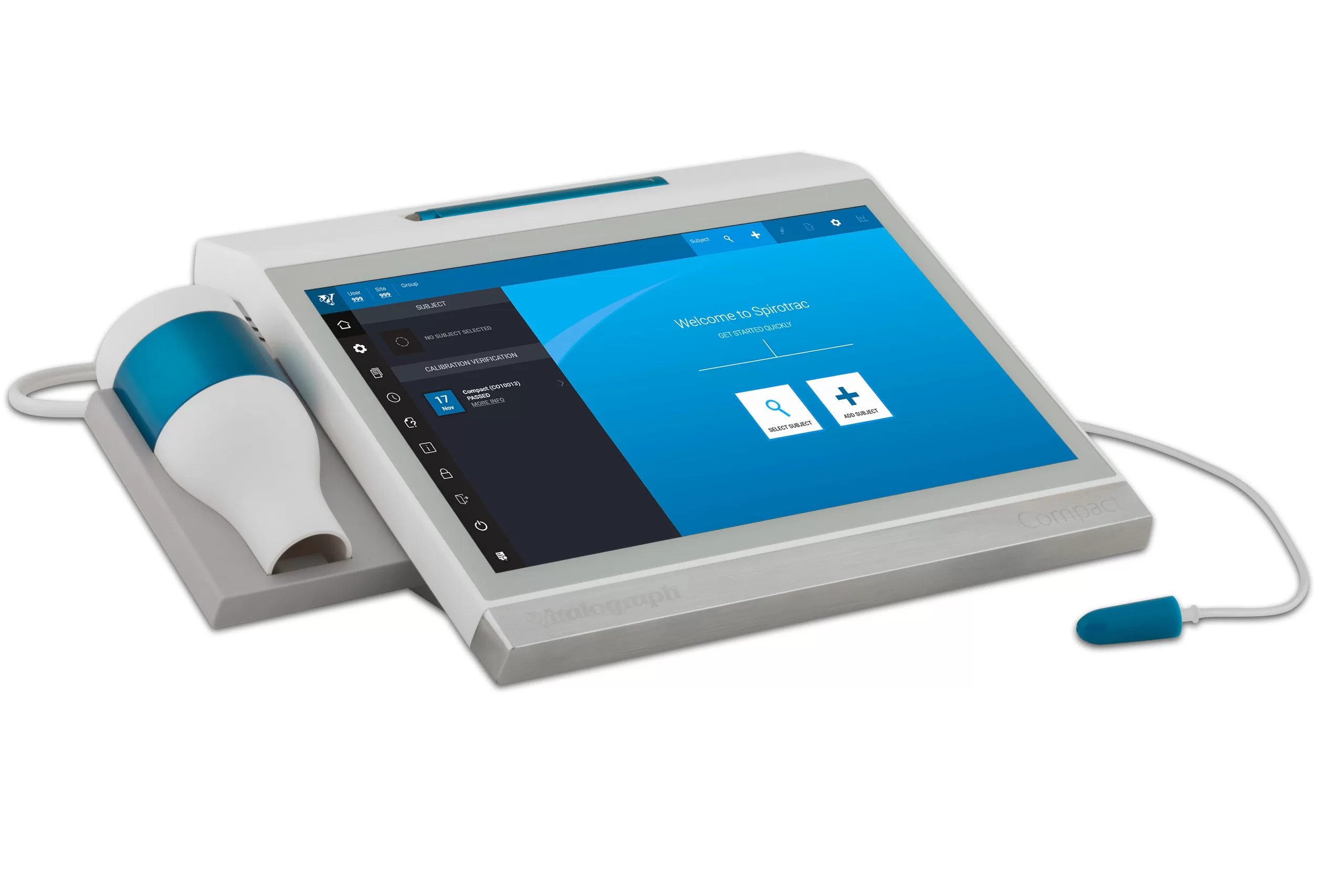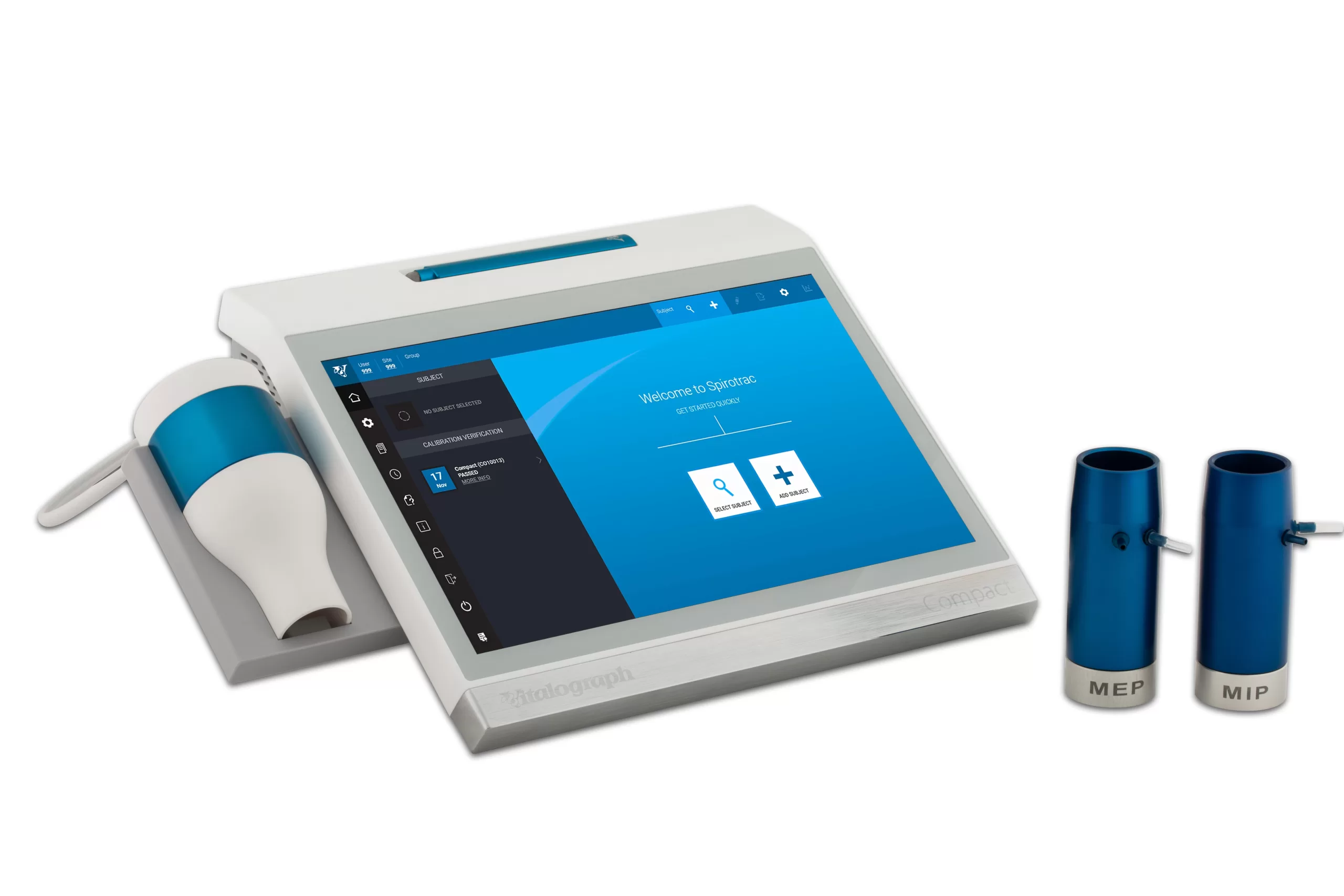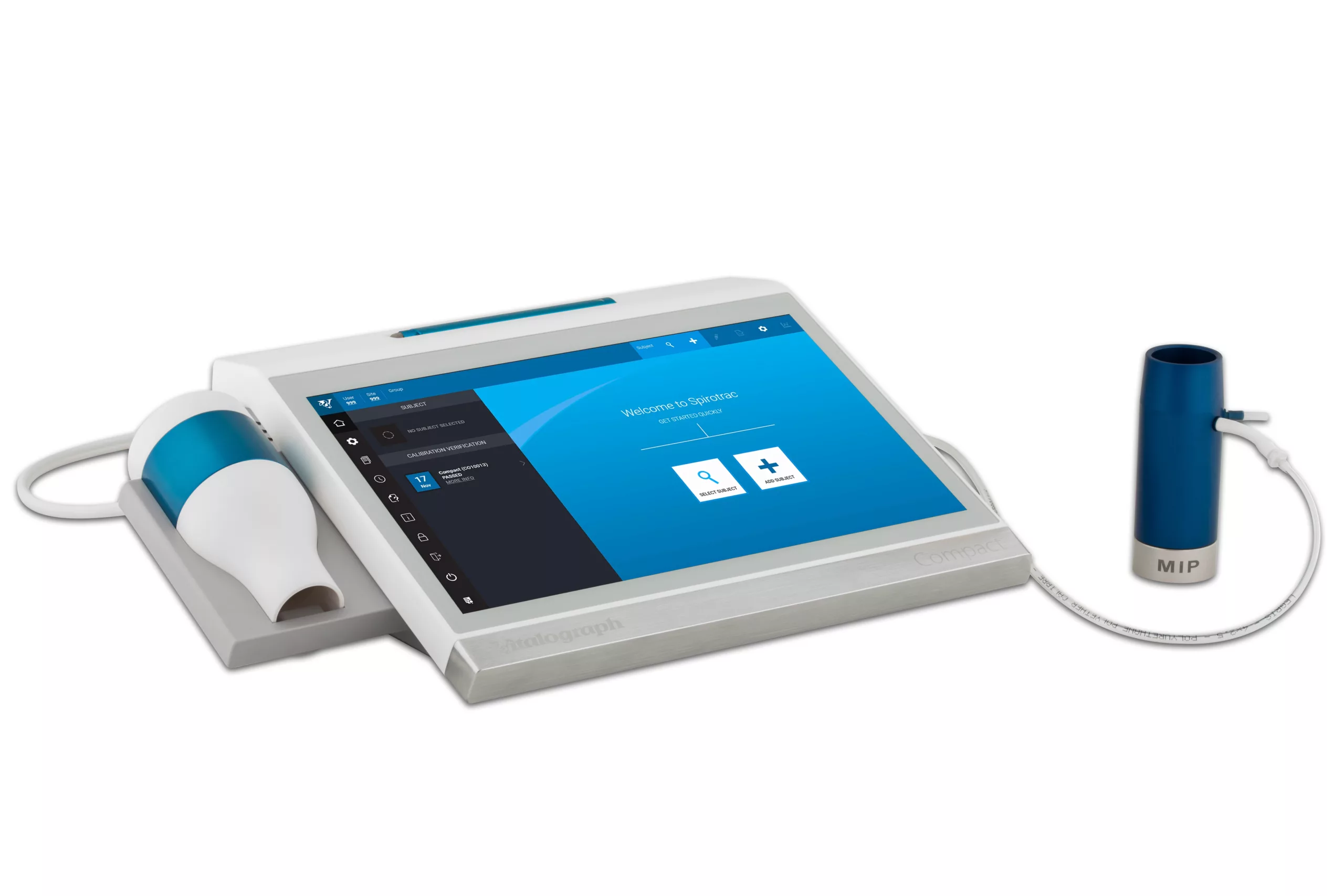Respiratory Muscle Strength
Respiratory Muscle Strength tests are used to monitor neuromuscular and degenerative disorders. Available as centralized endpoints via the Compact Medical Workstation.
A choice of respiratory muscle strength assessments are available to support studies where endpoints relate to changes in respiratory muscle strength, with particular relevance for neuromuscular conditions. Assessments are available as modules in Spirotrac® software, which runs on the Compact™ Medical Workstation.
Vitalograph Respiratory Muscle Strength Assessment solutions include testing that complies with the current ATS/ERS guidelines and equipment including specialist flowheads and nasal plugs. Visit workflows may be customized in Spirotrac to align with your Clinical Trial protocol and meet study endpoints.
Expert over-reading services are available for these key endpoint parameters in your clinical trial. Our team of Respiratory Physiologist SMEs are on hand to advise and support with study design that includes respiratory muscle strength assessment.
Compact Medical Workstation modules include:
- Maximal inspiratory pressure (MIP)
- Maximal expiratory pressure (MEP)
- Sniff nasal inspiratory pressure (SNIP)
- Peak cough flow (PCF)
- Inspiratory Flow Rate (IFR)
MIP reflects the strength of the diaphragm and other inspiratory muscles while MEP indicates the strength of the abdominal and other expiratory muscles.
SNIP is a well validated alternative or add-on assessment for inspiratory muscle strength especially where forming a seal around a mouthpiece is difficult.
PCF measures the maximum air flow generated during a cough.
IFR is used to monitor decline in muscle strength by monitoring the ratio between the maximum flow rate achieved during inspired tidal (relaxed) breathing compared to the maximum flow rate achieved during a forced inhalation.
Technical Specification
| MIP/MEP/SNIP Specifications on Vitalograph Compact | |
|---|---|
| Operating Pressure | +/- 300cmH20 |
| Pressure Accuracy | +/- 3% |
| Pressure Resolution | 1 cmH20 |



